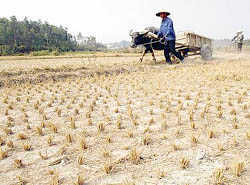By Jason Klein, IEDRO’s Environmental Writer and Editor
We have all witnessed the effects of famine – malnourished children, dead herds of cattle, the plaintive appeals of Sally Struthers. But what if a famine could be predicted, and then we could work to prevent it?
The good news is that by delving into past instances of drought and famine, we will be able to take actions to avoid future instances of mass starvation.
In James C. McCann’s “Causation and Climate in African History,” the author emphasizes the importance of rainfall in food production in Africa. “It is,” states McCann, “the patterns of seasonal rainfall that triggers the social and economic processes of labor, renewal of resources (food, seed, and forage) and the shortage or abundance of harvests.”
However important rainfall may be to food production, the recording of climatic data in Africa has only begun very recently. This, in part, has been due to increased media attention brought on by droughts and famines. Some historians (such as Joseph Miller & J.B. Webster) relied strictly upon anecdotal evidence, using little or no scientific data in their work. Others, including the historical meteorologist Sharon Nicholson, have combined historical accounts, measures of lake levels, and other climatic indicators to discern several geographic regions and time periods of the continent’s history.
Historians have been able to link political and economic changes to phases of abundance or scarcity of food supplies. For example, maize (also known as “corn”) was introduced to Africa after 1500. Maize was productive in many areas of Africa where rainfall exceeded 400 millimeters. However, when rainfall fell in the 19th century, maize crops quickly disappeared – and because this was a main stable of diet, the risk of famine increased. Mono-agricultural dependence is a risk we continue to face today.
The dangerous relationship between precipitation, food production and social stability was borne out no more catastrophically than in the Maya civilization. The Maya people, located in what is now Central America and southern Mexico, had a civilization that lasted for more than 2600 years. The Classic period of Mayan civilization lasted from about 250 AD until around 900. At the height of the society, the Mayan population numbered in the millions. Then, suddenly, the civilization collapsed. No one is certain exactly why this happened, but several researchers have proposed a link between a mild but prolonged decrease in rainfall, conversion of forest to cropland and overpopulation. Their research is based upon climatic data obtained from lake and cave sediments.
Interactions between the environment and society are always complicated. However, by continuing to study to understand the uncertainties surrounding the causes of famine and climate change, we hope to avert disaster.
References
http://en.wikipedia.org/wiki/Maya_civilization (“Classic” and “The Maya collapse” sections)


Comments are closed.